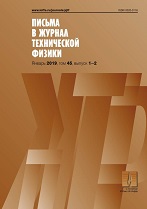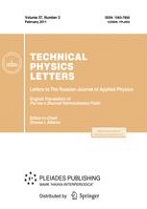|
This article is cited in 4 scientific papers (total in 4 papers)
Structural analysis of nanoparticles formed via laser ablation of porous silicon and silicon microparticles in water
S. V. Zabotnovabc, A. V. Kolchina, F. V. Kashaeva, A. V. Skobelkinaa, V. Yu. Nesterova, D. E. Presnovade, L. A. Golovana, P. K. Kashkarovabc
a Faculty of Physics, Lomonosov Moscow State University
b Moscow Physicotechnical Institute, Institute of Nano-, Bio-, Information, Cognitive and Social Sciences and Technologies, Moscow Institute of Physics and Technology (National Research University), Moscow, Russia
c National Research Centre "Kurchatov Institute", Moscow
d Lomonosov Moscow State University, Skobeltsyn Institute of Nuclear Physics
e Quantum Technology Center of M. V. Lomonosov Moscow State University
Abstract:
Silicon nanoparticles with sizes of 50–300 nm have been formed via picosecond laser ablation of porous silicon and silicon microparticles in water using various targets. Raman spectroscopy has revealed the presence of a low amount of the amorphous phase in the obtained particles (10–12%) prepared from micro- and mesoporous silicon layers and almost a zero degree of crystallinity in the case of laser fragmentation of silicon micropowders in water. The results are promising for further application of the nanoparticles in photonics and biomedicine.
Keywords:
silicon nanoparticles, laser ablation, Raman scattering.
Received: 14.06.2019
Revised: 14.06.2019
Accepted: 09.07.2019
Citation:
S. V. Zabotnov, A. V. Kolchin, F. V. Kashaev, A. V. Skobelkina, V. Yu. Nesterov, D. E. Presnov, L. A. Golovan, P. K. Kashkarov, “Structural analysis of nanoparticles formed via laser ablation of porous silicon and silicon microparticles in water”, Pisma v Zhurnal Tekhnicheskoi Fiziki, 45:21 (2019), 22–25; Tech. Phys. Lett., 45:11 (2019), 1085–1088
Linking options:
https://www.mathnet.ru/eng/pjtf5276 https://www.mathnet.ru/eng/pjtf/v45/i21/p22
|


| Statistics & downloads: |
| Abstract page: | 51 | | Full-text PDF : | 10 |
|



 Contact us:
Contact us: Terms of Use
Terms of Use
 Registration to the website
Registration to the website Logotypes
Logotypes